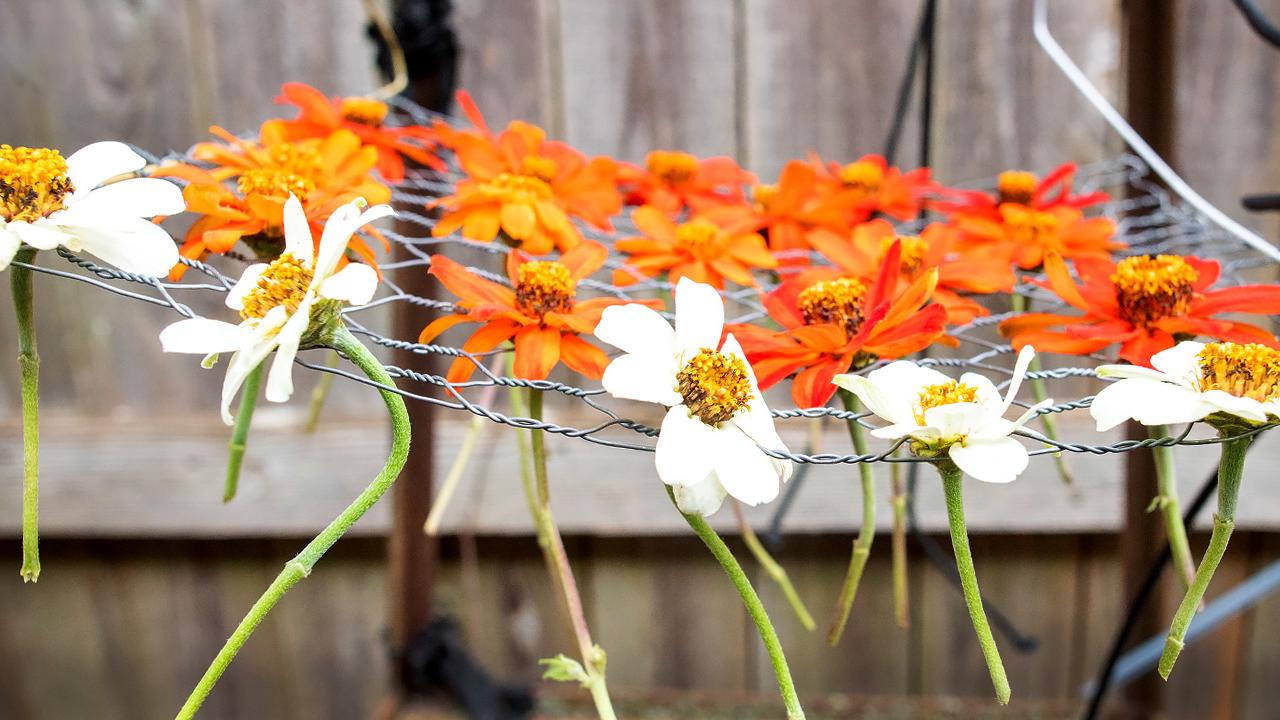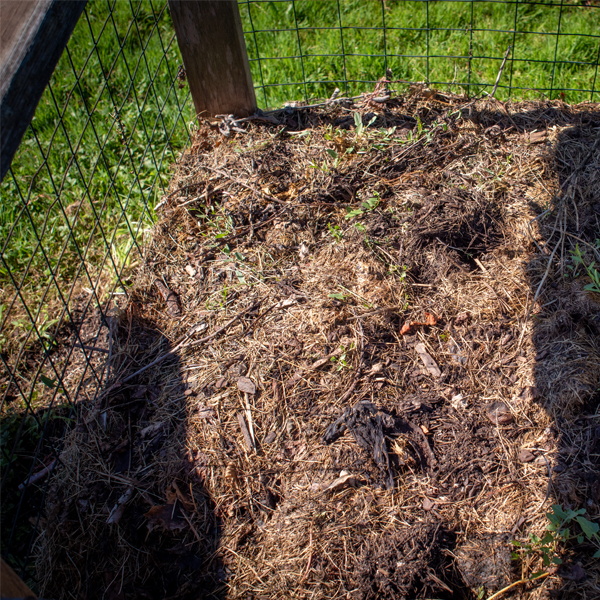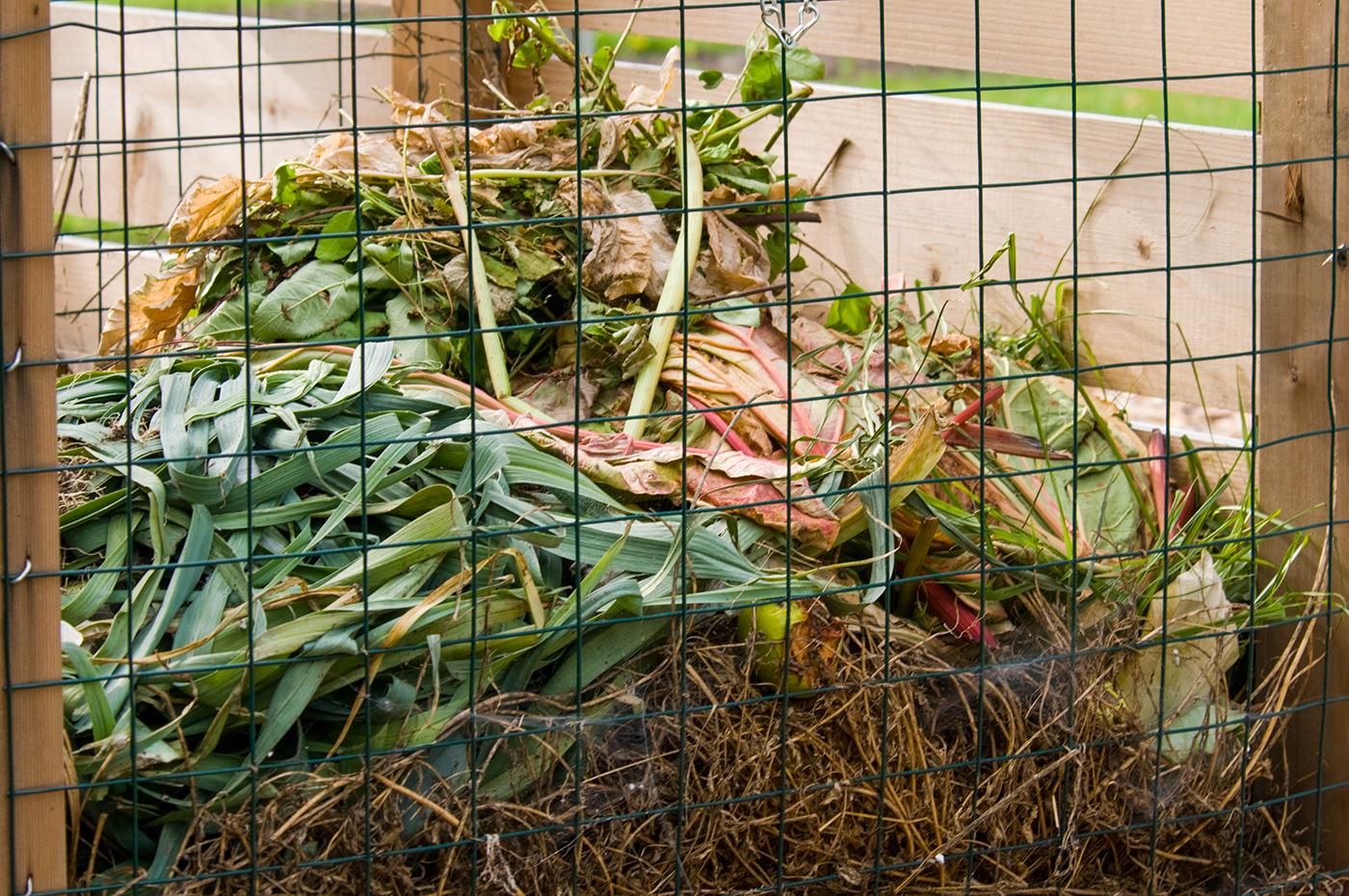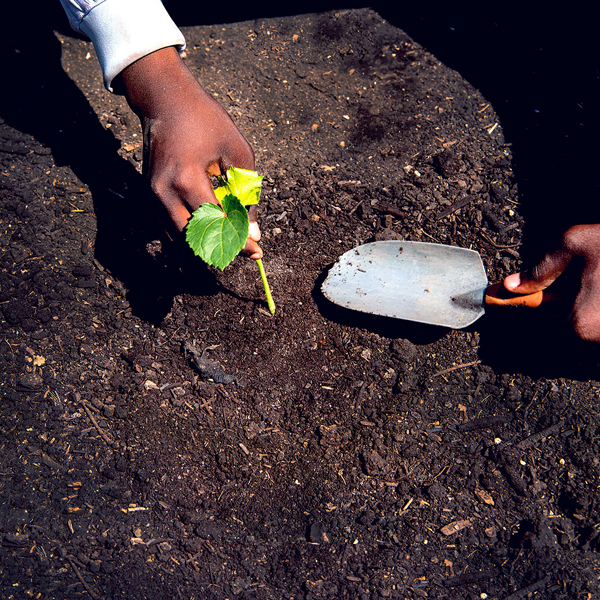

How-to
Garden Stories
Waste not, want not, or, there is no “away”
Why composting doesn’t have to be hard anymore
If I spot a few weeds in the shade garden, I yank them before they flower and hide their remains under the hostas where they serve as mulch as they break down. It’s my easy (lazy) way of recycling organic material into the soil. I take shortcuts when I’m composting, too. We have two large compost piles way in the back of our 1-acre garden. The contents seldom get turned (as is usually recommended), but I continuously add grass clippings, small twigs, weeds, and kitchen scraps to the top layers. After a few months, the bottom and center of the piles have decomposed with the help of unseen microorganisms—millions of them. The weeds and scraps are transformed into a rich, dark crumbly goodness that goes into my wheelbarrow and onto the beds and borders as a soil amendment.
The best part—besides free compost—is the small amount of garbage our household produces as a result.
Everyday items—paper, plastic, glass, and metal—are recycled. But it’s food waste—vegetable peelings, coffee grounds, a few fuzzy strawberries in the back of the refrigerator, the seeds and membranes from jalapeños, and the occasional box of expired rice or cereal—that go into the compost. I top it off with weeds, spent flowers, a gangly houseplant or two with potting mix attached to the roots, and other garden debris. And I put a bucket of water on it from time to time because even microorganisms get thirsty while they are working to process all that debris.
Composting makes me feel good—I’m doing something that’s incredibly easy while keeping our kitchen and garden waste out of a landfill. We talk about throwing things away but there is no “away.” Garbage dumps, landfills, and facilities that burn everyone’s trash are out-of-sight, out-of-mind topics for many. But, it all stays right here. On planet Earth.
The amount of waste—including food waste—that we generate is mind-boggling.
The U.S. Environmental Protection Agency (EPA), states, “most people don't realize how much food they throw away every day—from uneaten leftovers to spoiled produce to parts of fruits and vegetables that could be eaten or repurposed.” Repurposed—as in making a fruit smoothie with those leftover apple or carrot peelings—or composting.
The EPA estimates that one-third of all food in the United States goes uneaten and that in 2018, about 81 percent of household food waste was sent to landfills or combustion facilities. Think about it—a farmer produced and transported that food, and later it may have been stored in refrigerated buildings before it arrived at a grocery store or farmer’s market. The oil, gas, water, fertilizers, and human resources required to produce food that ends up in the garbage is something that’s quite troubling but easily addressed.
Why should we care?
You’ve no doubt heard the constant drumbeat about climate change and greenhouse gasses. When food waste ends up in a landfill and decomposes, the byproducts are methane and carbon dioxide. Methane is a very potent greenhouse gas. When I think about this, it feels like my hair is on fire, mostly because I know that many people—even non-gardeners—could compost their food and yard waste, but they shrug it off as too difficult or troublesome. (As a lazy gardener, I can confirm that it is neither.)



Composting is incredibly easy.
Even a modest, small, enclosed composting container can fit into most backyards where it’s out of sight—whether you live in an urban or suburban community. Composting is simply a controlled, aerobic (oxygen-required) process that converts kitchen scraps and yard waste into a nutrient-rich soil amendment. As you add vegetable scraps and dry leaves (or junk mail), those unseen microorganisms in the pile consume carbon and nitrogen, helping decomposition. The end result is similar to what you might buy in bags at a garden center.
If you are worried about raccoons, possums, mice, and any other varmints that may forage among your leftover avocado and onion peels, there are enclosed “tumbling” composters that sit on a stand, allowing you to twirl the bin as needed, which helps speed up the decomposition process. There are compost bins that sit on the ground and have slots in the sides for aeration and a lid to keep out animals. Or you can make your own three-sided bin out of wooden pallets or wire fencing and metal posts.
A compost pile needs a balance of carbon-rich materials (think dried or brown) like dry leaves, stalks, twigs, or paper, and nitrogen-rich materials (green items like untreated grass clippings and veggie scraps) to heat up the pile so that materials will decompose. And water is necessary to keep the pile lightly moist. Too dry and it will slow the decomposition process; too wet and the pile becomes a smelly mess.
Unlike landfills, home compost piles typically generate very little gas, especially if they are aerated—turned with a fork or shovel—every few weeks or so. If the compost smells, it needs to be turned and likely needs more carbon-rich dry materials.
If I wasn’t so lazy, I’d throw banana peels, egg shells, and apple cores into a blender with a little water—to speed up breakdown—and I’d pour that slurry onto the compost to feed the worms and microscopic critters. The smaller particles create more surface area on which they can feed. I’m thankful for these tiny workers who are transforming my kitchen scraps into black gold.
Think about doing your bit for the environment and your garden—composting is easier than you think.

